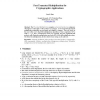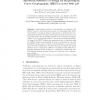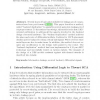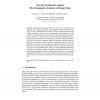CHES
2005
Springer
13 years 10 months ago
2005
Springer
Abstract. In this paper, the evaluation of random bit generators for security applications is discussed and the concept of stateless generator is introduced. It is shown how, for t...
CHES
2005
Springer
13 years 10 months ago
2005
Springer
The Truncated Multiplication computes a truncated product, a contiguous subsequence of the digits of the product of 2 integers. A few truncated polynomial multiplication algorithms...
CHES
2005
Springer
13 years 10 months ago
2005
Springer
CHES
2005
Springer
13 years 10 months ago
2005
Springer
Abstract. Several types of logic gates suitable for leakage-proof computations have been put forward [1,2,3,4]. This paper describes a method, called “backend duplication” to a...
CHES
2005
Springer
13 years 10 months ago
2005
Springer
We introduce two new attacks: the single-bit template attack and the template-enhanced DPA attack. The single-bit template attack can be used very effectively to classify even sin...
CHES
2005
Springer
13 years 10 months ago
2005
Springer
During the last years, several masking schemes for AES have been proposed to secure hardware implementations against DPA attacks. In order to investigate the effectiveness of thes...
CHES
2005
Springer
13 years 10 months ago
2005
Springer
Electromagnetic analysis (EMA) can be used to compromise secret information by analysing the electric and/or magnetic fields emanating from a device. It follows differential power...




